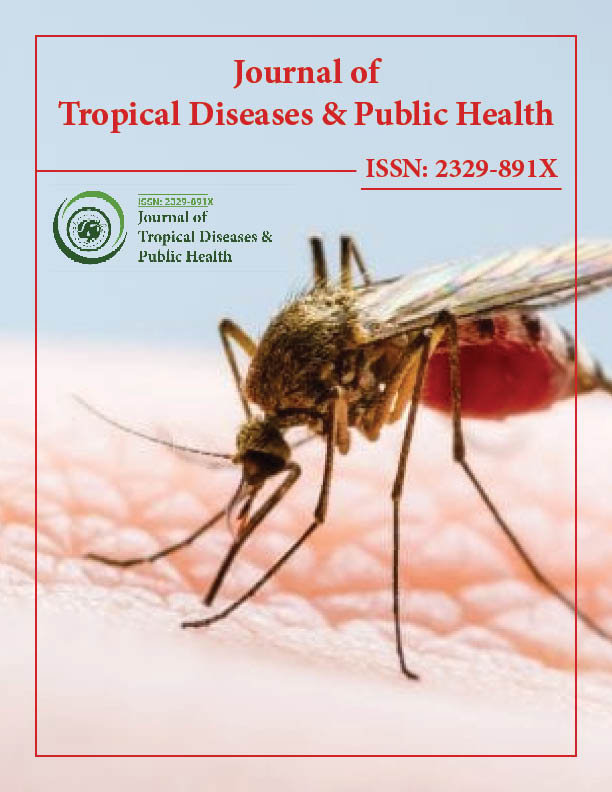Indexed In
- Open J Gate
- Academic Keys
- ResearchBible
- China National Knowledge Infrastructure (CNKI)
- Centre for Agriculture and Biosciences International (CABI)
- RefSeek
- Hamdard University
- EBSCO A-Z
- OCLC- WorldCat
- CABI full text
- Publons
- Geneva Foundation for Medical Education and Research
- Google Scholar
Useful Links
Share This Page
Journal Flyer

Open Access Journals
- Agri and Aquaculture
- Biochemistry
- Bioinformatics & Systems Biology
- Business & Management
- Chemistry
- Clinical Sciences
- Engineering
- Food & Nutrition
- General Science
- Genetics & Molecular Biology
- Immunology & Microbiology
- Medical Sciences
- Neuroscience & Psychology
- Nursing & Health Care
- Pharmaceutical Sciences
Commentary - (2025) Volume 13, Issue 1
Zoonotic Diseases as a Critical Interface Between Animal and Human Health Systems
Derege Laura*Received: 24-Feb-2025, Manuscript No. JTD-25-29276; Editor assigned: 26-Feb-2025, Pre QC No. JTD-25-29276; Reviewed: 12-Mar-2025, QC No. JTD-25-29276; Revised: 19-Mar-2025, Manuscript No. JTD-25-29276; Published: 26-Mar-2025, DOI: 10.35241/2329-891X.25.13.470
Description
Zoonotic diseases are infectious diseases that are transmitted between animals and humans. These diseases can be caused by a variety of pathogens, including bacteria, viruses, parasites, and fungi. Zoonoses account for more than 60% of all emerging infectious diseases in humans, making them a major concern for global public health. The interactions between humans, animals, and the environment play a central role in the transmission and emergence of these diseases.
Zoonotic diseases can be transmitted in several ways. Direct transmission occurs through contact with the blood, saliva, urine, or other bodily fluids of an infected animal. Indirect transmission can occur via contaminated food, water, or surfaces, or through intermediate hosts or vectors such as ticks, fleas or mosquitoes. Some zoonotic pathogens can also be airborne, spreading through droplets or aerosols.
One of the most well-known and historically significant zoonotic diseases is rabies, caused by the rabies virus and transmitted through the bite of infected animals, usually dogs in developing countries. Rabies is almost always fatal once clinical symptoms appear, but it is preventable through prompt post-exposure prophylaxis and vaccination. Dog vaccination programs have proven highly effective in reducing human rabies deaths. The COVID-19 pandemic has underscored the importance of understanding zoonotic disease ecology, regulating wildlife trade and strengthening health systems to detect and contain novel pathogens.
Anthrax, caused by the bacterium Bacillus anthracis, is another serious zoonotic disease. It primarily affects livestock and wild animals, and humans can become infected through direct contact with infected animals or their products. Anthrax can manifest in cutaneous, inhalational, or gastrointestinal forms, with the inhalational form being the deadliest disease. Proper handling of animal products and vaccination of livestock are essential prevention measures.
Brucellosis, caused by bacteria of the genus Brucella, is transmitted to humans through consumption of unpasteurized dairy products or direct contact with infected animals. It causes fever, fatigue, joint pain, and in chronic cases, complications in various organs. The disease remains endemic in many countries with large livestock populations and insufficient veterinary public health services.
Leptospirosis, a bacterial disease caused by Leptospira species, is typically spread through water contaminated with urine from infected animals, especially rodents. It is particularly common in tropical regions and during floods or in areas with poor sanitation. Symptoms range from mild flu-like illness to severe disease with liver and kidney damage.
Toxoplasmosis, caused by the parasite Toxoplasma gondii, is transmitted through undercooked meat, contaminated water, or contact with cat feces. While often asymptomatic in healthy individuals, it can cause serious complications in pregnant women and immunocompromised people, including miscarriage, birth defects, and neurological problems.
Conclusion
Zoonotic diseases are a major global health issue with significant implications for both human and animal populations. Their prevention and control require coordinated efforts across multiple sectors, informed by science and guided by the principles of One Health. As the world becomes more interconnected, the importance of understanding and managing zoonotic diseases continues to grow. This interdisciplinary strategy involves collaboration between veterinarians, physicians, ecologists, and public health professionals to prevent, detect, and respond to zoonotic threats. Surveillance systems must monitor both human and animal populations, and policies must regulate animal husbandry, wildlife trade, and environmental conservation
Citation: Laura D (2025). Zoonotic Diseases as a Critical Interface Between Animal and Human Health Systems. J Trop Dis. 13:470
Copyright: © 2025 Laura D. This is an open-access article distributed under the terms of the Creative Commons Attribution License, which permits unrestricted use, distribution and reproduction in any medium, provided the original author and source are credited.

